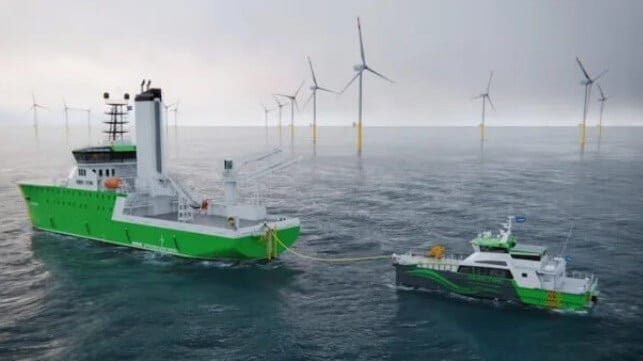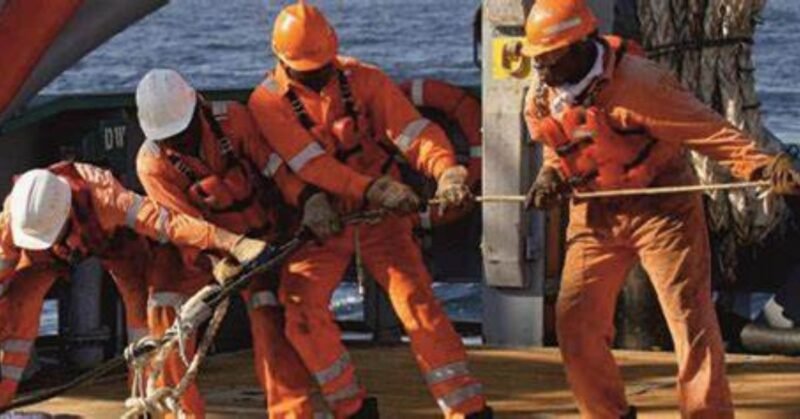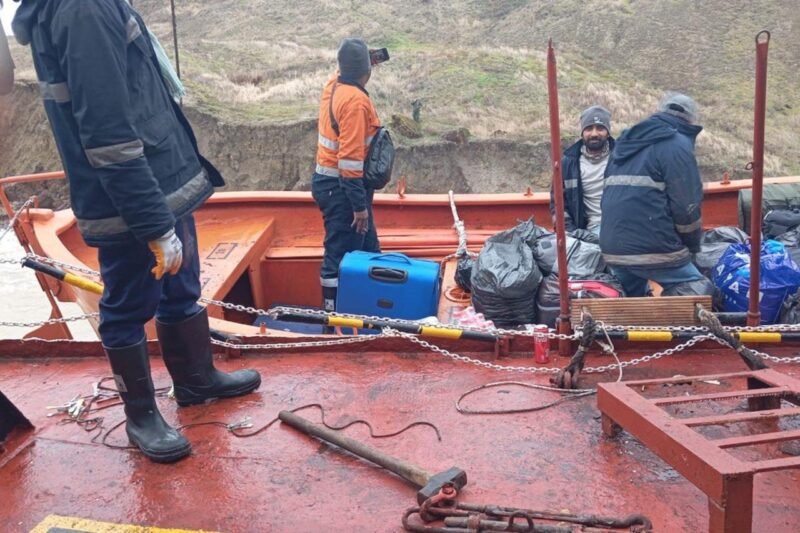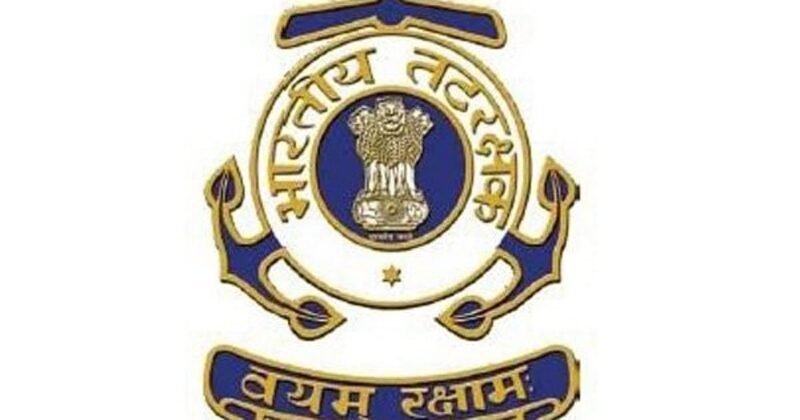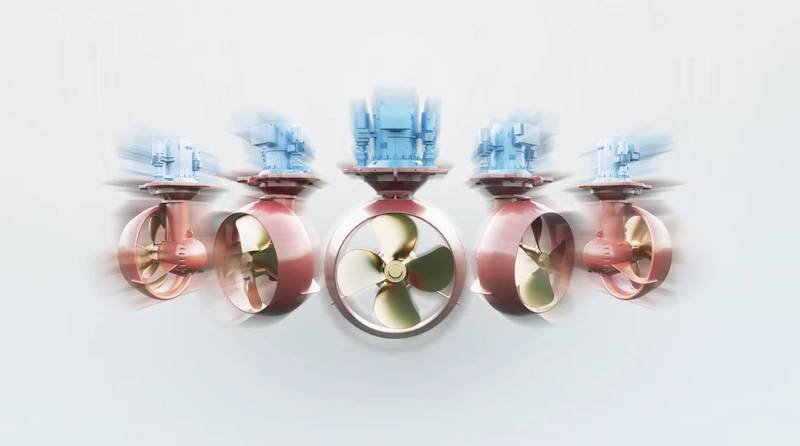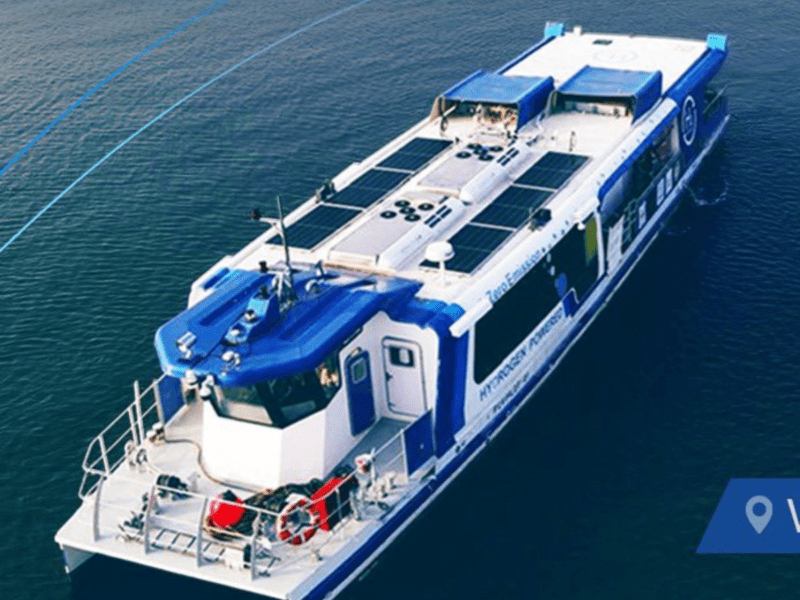Damen Shipyards Group has identified a challenge in the adoption of fully electric Crew Transfer Vessels at wind farms – the lack of charging options while on-site. While various technologies are being developed for charging buoys or connections to wind turbines, Damen notes that turbine-mounted chargers are not yet widely available. As wind farms move further offshore, the need for charging to support battery-powered vessels like Commissioning Service Operations Vessels becomes crucial.
To address this issue, Damen has developed a vessel-to-vessel charging design that allows for the integration of electric vessels at wind farms, reducing emissions. By installing a large battery system on larger vessels like CSOVs instead of smaller CTVs, Damen overcomes weight and space restrictions, ensuring energy access without compromising capabilities.
The charging system, developed by UK-based MJR, allows for automated charging between vessels, with charging expected to take 2 to 3 hours. Damen highlights the advantages of vessel-to-vessel charging, including easier access and repositioning capabilities based on wave conditions. Additionally, Damen has unveiled designs for a larger, fully electric Fast Crew Supplier with enhanced features for efficient crew transfers to offshore wind farms.


